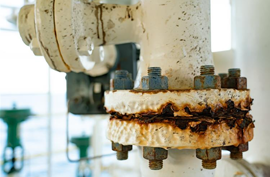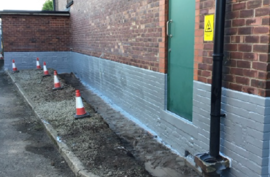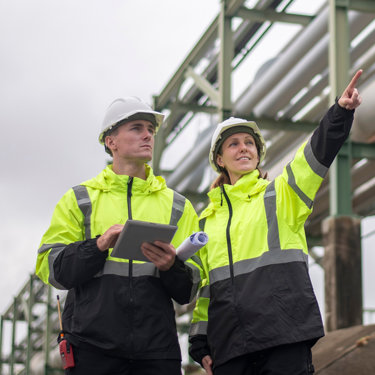Selecting, installing and maintaining separators correctly to ensure effective forecourt drainage
Published: 19 December 2023
Proper drainage on forecourts is not just a matter of preventing puddles after a rainstorm; it is a critical component of environmental responsibility. The choices made during the selection, installation, and ongoing maintenance of drainage systems play a pivotal role in preventing pollution and ensuring the efficient management of resources.
Lets explore the importance of correct separator choices, the significance of proper installation, and the ongoing maintenance required to meet regulatory standards and safeguard the environment.
Choosing the right separators
Forecourt drainage begins with the careful selection of separators. These are devices designed to remove pollutants from surface water runoff before it enters the drainage system. With our clients we always emphasise the importance of choosing separators that adhere to industry standards. According to British Standard BS EN 858-2:2003, separators should meet specific requirements to effectively remove pollutants such as oil, sediment, and debris. Understanding the nature of pollutants present in the forecourt environment is crucial for making informed decisions during the selection process.
Installation: Following guidelines for success
Once the appropriate separator has been selected, proper installation is key to its effectiveness. BS EN 858-2:2003 lays down specific installation requirements to guarantee the optimal performance of separators. It is crucial for forecourt operators to adhere to these standards, not only to comply with regulations but also to actively contribute to environmental protection. Proper installation minimises the risk of leaks, overflows, and system failures that could result in the release of harmful substances into the environment. Following these guidelines ensures that the separator functions as intended, preventing pollutants from entering the drainage system and subsequently, the environment.
Ongoing maintenance: Sustaining environmental integrity
The commitment to effective forecourt drainage does not end with installation; ongoing maintenance is equally vital. Regular inspections and maintenance activities are necessary to ensure that separators continue to operate at peak efficiency.
BS EN 858-2:2003 specifies maintenance intervals based on the type of separator and the level of pollutants present. Routine inspections help identify issues early, allowing for prompt corrective action. This proactive approach not only ensures compliance with regulations, but also prevents potential environmental disasters. Forecourt operators must recognise that maintenance is an investment in environmental sustainability and regulatory adherence.
Legislation: BS EN 858-2:2003
British Standard BS EN 858-2:2003 serves as the cornerstone for forecourt drainage regulations. Referencing this legislation is not only essential for compliance but is also a demonstration of a commitment to best practices. Forecourt operators must be well-versed in the requirements outlined in BS EN 858-2:2003 to make informed decisions during the selection, installation, and maintenance phases of drainage system management.
Conclusion
Effective forecourt drainage is a multifaceted responsibility that begins with the correct choice of separators, follows through with precise installation, and is sustained through ongoing maintenance. By referencing legislation such as BS EN 858-2:2003 and utilising resources provided by environmental services companies, forecourt operators can actively contribute to pollution prevention and resource management. The correct separators not only prevent pollutants from draining away but also safeguard the integrity of our environment for future generations. In the realm of forecourt drainage, making the right choices today ensures a cleaner and more sustainable tomorrow.
More from our Knowledge Hub
 Insights
InsightsEarth Day 2025: Enabling a sustainable future while supporting today’s infrastructure in an evolving energy landscape
 Insights
InsightsMitigating climate change risks through planned preventive maintenance
 Insights
InsightsProtective coatings: Safeguarding infrastructure against climate change
 Insights
InsightsDelivering the Water (Special Measures) Act: Supporting compliance and innovation
Environmental compliance today, creating a sustainable tomorrow
Helping you reduce risk to the environment and your operation by managing assets compliantly while achieving commercial, ESG, and net-zero goals.
Contact our experts
